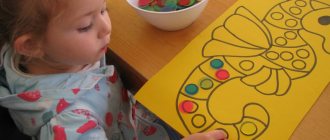A corner of wildlife in kindergarten is one of the necessary conditions for visually and effectively introducing preschoolers to nature. In the corner of wildlife, preschoolers can approach animals and plants throughout the day, examine them, and conduct long-term observations of them. Children's specific knowledge about nature expands.
Requirements for selecting inhabitants of a corner of nature:
1. The plant or animal must be typical of a particular systematic or ecological group
.
2. Caring
should be accessible to children
in terms of quality, nature of work, effort and time expended. 3. Plants and animals in the corner of nature should be
visually attractive 4.
Plants and animals should be
absolutely safe.5.
It is necessary
to take into account the possibility of normal life of animals and plants.
6. A corner of nature should please the eye and
decorate the interior.7.
so that children can
freely approach them
, observe and work in a corner of nature.
All inhabitants of a corner of nature in a kindergarten can be divided into permanent and temporary.
2nd junior group
Plants with large leathery leaves (for care), Plants with clearly defined parts (ficus, geranium).
Middle group
Several specimens and varieties of the same species, Plants with varied leaves (Common geranium and Zonal geranium, Uzumbar violet)
Senior group
Plants with diverse stems (Cisus, cactus, Chinese rose), Plants that reproduce differently (Tradescantia, Chlorophytum, Viola uzumbara), Plants that require varied care (Cisus, Ficus, Impatiens)
Caring for indoor plants
Removing dust
(starting from the younger group, first observation and repeat together with the teacher; middle - under the supervision of the teacher, senior - independently ): Large leathery leaves - with a damp cloth;
Small leathery leaves - shower; small ones - spraying. Loosening (dry watering)
(younger - supervised, middle - under the supervision of a teacher, eldest - independently) If there is crust on the soil, use a shelf for loosening.
In the fall, plants transplanted from the flower garden into pots are transferred to the corner. Animals that hibernate, on the contrary, are taken to a cool, unheated room.
In winter, planting is done in the corner, starting with the younger group ( observation, middle and senior - under the guidance
) onions for feathers, oats, lettuce, carrots and beets for greens... By the end of winter, vessels with cut branches of trees and bushes are placed in a corner of nature.
In spring, boxes with seedlings and rooted cuttings ( older group
) are placed in a corner.
In summer, a corner of nature is placed on the veranda or in a gazebo and is significantly replenished with plants and animals that children bring from excursions and walks.
GCD "Indoor plants" (middle group)
Well done! Guys, you already know that every plant has its own name. What names of indoor plants do you know? (Children name the plants and show them.)
2. Didactic game:
“Indoor and garden plants”
Educator:
Guys, what plants do you know besides indoor plants? (garden)
Can you tell them apart? On the table you see cards with pictures of indoor plants and garden flowers. They need to be distributed as follows: place indoor plants next to the flower pot, garden flowers - next to the flower bed.
3.Conversation about indoor plants:
Educator:
Children, look how many indoor plants there are in our group. What do you think these plants are for? (To make it beautiful.)
What else are indoor plants used for?
(Plants purify the air.)
It’s right that it should be beautiful—a person decorates his home with indoor plants. But they not only delight us with their beauty, but also cleanse the air of dust and dirt. Many indoor plants smell good.
Guys, what should you do to ensure that your indoor plant is always beautiful and doesn’t wilt? (care for a houseplant)
Let's tell you how we care for plants.
( children's answers)
4. Physical education:
Eat at home ( stand on your toes, stretch your arms up);
And there are bridges ( lean forward, arms back, knees straight
);
There are trees straighten up, ( round your arms above your head)
;
And the bushes, ( sit down, stretch your arms forward)
;
And to everyone’s surprise ( stand up, arms to the sides, body turns)
,
Plants in the room ( shoulders raised)
;
We can’t live without them ( hands on the belt, turning the head to the right and left)
;
Because we are friends! ( spread your arms to the sides, clasp your body with your arms
).
5. Game:
"What would happen if..."
-What would happen if the plant was placed in a dark place?
— What would happen if they forgot to water the plant?
— What would happen if you take care of the plant: water it, wash it, loosen the soil, feed it?
(Children's answers)
.
6.Planting a plant
Educator:
Let's plant geraniums with you. What does it take to plant a plant? (flower pot, soil, water for irrigation)
.
Children participate in planting the plant.
Educator:
Take a flower pot. What should we put in the pot first? (We fill the flower pot with soil and make a hole for the flower.)
After we've poured the soil, what's next?
(We plant the flower in the ground and sprinkle it.)
We have planted the plant, is there anything else that needs to be done? (Immediately after planting, the plant needs to be watered so that it grows better).
Reflection:
Complete the sentence: “I love taking care of indoor plants,
because..." (
children's answers)
Teacher:
Walk “Observing flowers in a flowerbed”
Walk “Observing flowers in a flowerbed”
Goal: Educational: - to form an idea of the diversity of inanimate nature; - learn to admire growing flowers. Developmental: —
develop the ability to generalize based on essential features;
- develop speech, activate vocabulary; - expand your understanding of plant parts. Educational: -
cultivate a responsible attitude towards nature;
- cultivate a caring attitude towards the beautiful creations of nature. Progress of the walk. Mystery.
The meadow is just like a chintz scarf of all colors - You won’t understand where the butterfly is, Where the living flower is. Forest and field in greenery, blue river, White, fluffy clouds in the sky.
Children.
In summer.
Educator.
- Guys, today I invite you to take a walk and look at our flower beds. (Children go to the flower beds.)
Listen to the poem.
I walk through a green meadow, the dew dries on the leaves, the wind sways the grass elastically, and I hear the voices of flowers. They whisper: “Don’t tear us, don’t, don’t crush our flexible stems. We are a delight for the eyes and the heart, an adornment of our native land.”
Educator.
- Guys, listen to the riddle.
Mystery .
The leaves bend in a spiral, And huddle together, And above them are those flowers, Not buds, but perfumes, What kind of flowers are these?
Children.
Lily (Invite the children to look at the flowers and remember the names.)
Because of their long stems, lilies are always planted inside the flower bed so that the flowers look beautiful among the shorter flowers at the periphery of the flower bed. The lily has a lot of lanceolate leaves, collected in a basal rosette, from which emerges a tall straight stem with an elegant flower. Lily flowers are orange, snow-white, tiger (speckled with black spots), etc. The root of the lily is a bulb. On a large lily flower it is very good to see the parts of the flower. The larger the flower, the better its parts are visible: the petals of the corolla, located on the receptacle, are large and orange; large black stamens with pollen sacs at the tips; in the middle there is one tall pestle.
Find identical flowers (lilies and petunias) and flowers collected in inflorescences. (Children find flowers).
Educator.
Listen to the riddle and say “What flower are we talking about?”
Mystery.
We bloom alone, summer
And we decorate the garden.
We look like velvet
Everyone will be happy to see us. (Marigold.)
Consider the differences between these colors.
Educator
.
All flowers are pleasing to the eye and decorate the surrounding space. Let's remember the poems.
1. We will water all the flowers on a hot, clear summer day. We will take care of the flowers so that they always bloom.
2. In spring and summer, here and there, flowers bloom to the joy of everyone: In the forest, in the field - wild, Fragrant, beautiful, alive. That's why I don't pick flowers. And you?
Didactic game “Flowers Shop”
Purpose:
to teach how to group plants according to their place of growth and describe their appearance.
Progress of the game.
Children play the roles of sellers and buyers. To make a purchase, you need to describe the plant you have chosen, but not name it, just say where it grows. The seller must guess what kind of flower it is, name it and the department of the store in which it is located (field, garden, indoor), then issue the purchase.
Educator.
- Guys, let's remember the signs. 1. Before the rain, roses and marigolds do not open their flowers. 2. By 8 o’clock in the morning, marigolds open their inflorescences. 3. Marigolds do not open their flowers - it means rain.
Experiment “Plant water requirements”
Children approach the flowerbed and pay attention to the condition of the flowers. Those flowers in flower beds that have not been watered for several days look drooping, the leaves are lowered to the ground. Those who watered stand with their heads held high.
Outdoor game “Developing attention” Purpose
: develop attention.
Progress of the game.
I suggest the children look around them (5-10 seconds) and remember as many colors as possible in order. Then blindfold. Swap the flower and ask them to list it in order as it was.
What changed?
Conclusion:
plants need water.
Labor on site
. Watering the flower beds.
Educator.
It's time for us to return to the group. — What new did you learn today?



